Live and Let Die – spotlight on cell death
One million cells in your body die every second. That means in one day, approximately 1.2 kg of cells die. But it's nothing to worry about. Quite the opposite; it would be a real problem if the cells in your body did not die. Cell death is a completely natural part of the body's recycling of cellular building blocks and it is actually a precondition for life. Read the first article in a "spotlight-on" series from our Swedish magazine Medicinsk Vetenskap.

Text: Fredrik Hedlund, first published in Swedish in the magazine Medicinsk Vetenskap no 2, 2014. Titles and affiliations updated in May 2021.
Old and broken cells must be taken away. Parts of cells that have broken down, or were not right from the start, need to be removed. So cell death is a very important part of the body's quality and sanitation system that clears away the old and broken bits and replaces them with new ones.
Problems arise, however, when something goes wrong with the cell death process. In the case of cancer, cells refuse to die and grow into a tumour. In diseases such as Alzheimer's or Parkinson's, the opposite occurs: brain cells die even though they are not supposed to.
Today there are more than 50 diseases in which scientists know that the whole reason, or a major part of it, is related to a failure of balance in cell death. This has made research into different types of cell death the most prolific area of research in the world during the past decade.
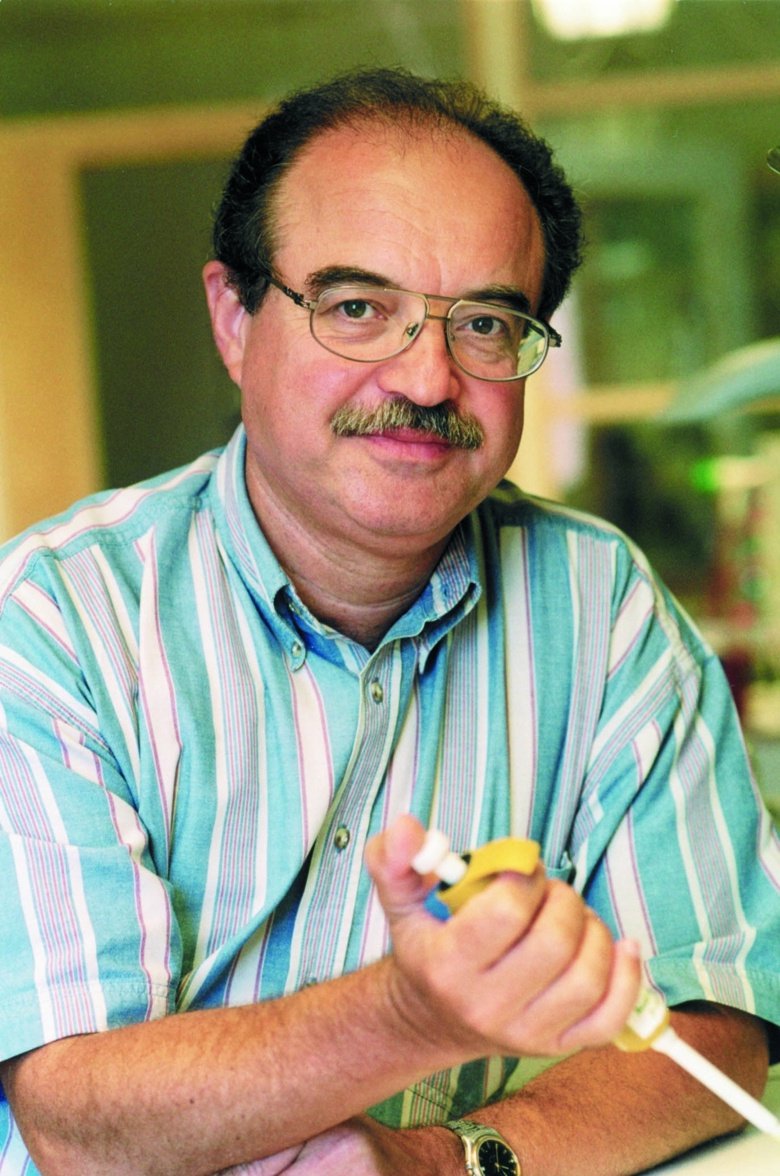
"Last year I counted how many articles were published in different fields in the global medical database, Pubmed. In first place were articles about cell death, programmed cell death, apoptosis or autophagy. On average, an article in this area is published every 24 minutes, around the clock. In second place was stem cell research, where one article was published every 34 minutes, explains Boris Zhivotovsky, Professor Emeritus in Toxicology at the Institute of Environmental Medicine, Karolinska Institutet.
When he moved from Russia more than 20 years ago to start working with Sten Orrenius, the pioneer of cell death at Karolinska Institutet, the situation was completely different.
"Every Saturday I used to go through all the articles that had been published during the week, but it is no longer possible," says Boris Zhivotovsky.
From a relatively calm period, research on cell death was catapulted into the spotlight twelve years ago when Sydney Brenner, John Sulston and Robert Horvitz were awarded the Nobel Prize in physiology or medicine in 2002. They received the prize for their detailed study of the one-millimetre long, transparent, roundworm Caenorhabditis elegance, or C. elegance as it is shortened to. They were able to show that exactly 131 of the worm's cells, out of a total of 1090 cells during development, always die due to programmed cell death, or apoptosis. They also identified the genes that regulated the process, showed that these genes could mutate and that humans have corresponding genes.
During early human development, too, cell death plays an important role when supporting tissue that is required to create certain forms must later die. This is the case during the formation of genital organs, the brain and fingers.
Cancer and cell death
For a long time, there were only two types of cell death that researchers were aware of: necrosis, which was long believed to be completely uncontrolled cell death caused by external factors, such as toxins; and apoptosis, which was the controlled and programmed cell death whose signal came from inside the cell. Scientists now know of twelve different types of cell death that occur under different conditions, and it is now common knowledge that apoptosis can also be initiated externally via death receptors and that programmed necrosis also exists. However, the majority of the twelve different cell death mechanisms are quite rare and only occur in very special circumstances. Anoikis is one example, which only occurs when the mammary glands in a mother's breast die after she has stopped breastfeeding. Apart from necrosis and apoptosis, the most important and widespread cell death mechanisms are autophagy and mitotic catastrophe.
But it is neither cell death functions during the development phase nor cell death mechanisms in mammary glands no longer used which have made this research area the most intensive in the world.
It is the numerous diseases that occur wholly or partly due to too much or too little cell death. When cell death researchers were awarded the Nobel Prize in 2002, apoptosis was hailed as the magic bullet that would be able to eradicate all cancer. The idea was to develop targeted treatments that in a very specific manner would stimulate the cell death program in cancer cells in different ways. Unfortunately the enthusiasm waned a little after it proved to be much more difficult to control cell death than many had believed.
Despite this setback, many pharmaceutical companies have invested big money in developing targeted and specific drugs for different parts of apoptosis, but with a few exceptions success has not been forthcoming.
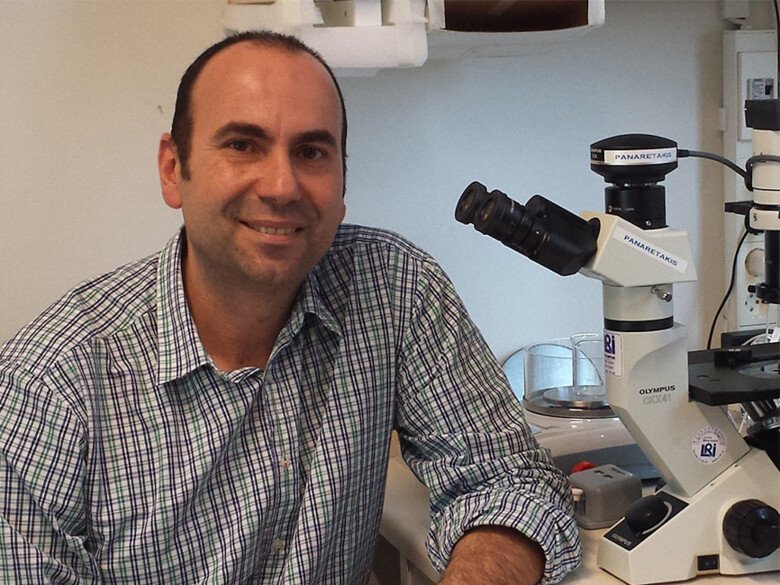
"Tumours often develop resistance to these modern treatments," says Theoharis Panaretakis, a researcher at the Institute of Environmental Medicine at Karolinska Institutet.
Resistance can develop in many different ways, making cancer a tough adversary. This also means that the new treatments rarely work alone, according to Theoharis Panaretakis.
"You either have resistance from the start or you have it after a while," he says.
The older, much less sophisticated cancer drugs now have a new importance in modern therapy.
"They have much more general mechanisms. They enter the cells and cause different types of damage, and the cells find it much more difficult to protect themselves and develop resistance to them. Unfortunately, they also have more side-effects," says Theoharis Panaretakis.
The old knock-out medicines can shock cancer cells so that they can't easily defend themselves against the targeted attack from new treatments.
"The best strategy is to use a combination of new targeted treatment and the classic cytostatic agents, and that is what's happening in clinics," says Theoharis Panaretakis.
But it has also emerged that some of the older chemotherapy treatments actually work by stimulating cell apoptosis programs, just like the new ones. It has become increasingly important to really know the details of drug mechanisms so that drugs which target the same system are not combined.
"If a patient takes drugs with different mechanisms, you have a much greater chance of actually killing the cancer cells," says Theoharis Panaretakis.
After the disappointment when targeted treatments against cancer cells' apoptosis program was not as effective as researchers had hoped, interest has now turned to another cell death mechanism and autophagy has become the new black for cancer research.
Autophagy means "self-eating" in Greek and describes the process very well – a cell eats parts of itself. The idea was to get cancer cells to eat so much of themselves that they would die. New research has shown that it is more frequent that cancer cells only eat the damaged parts of cells, which means that autophagy repairs the damage caused by chemotherapy. Researchers are now asking whether autophagy is a friend or foe in the fight against cancer.
"In most cases, autophagy is a friend to cancer cells and an enemy of the therapy. But there is some evidence that it is possible to kill cancer cells through autophagy with the right combination of drugs," says Theoharis Panaretakis.
Alzheimer's disease and cell death
Cancer cells create problems by refusing to die, whereas in the case of Alzheimer's disease, brain cells cause at least as much of a problem by doing the exact opposite.
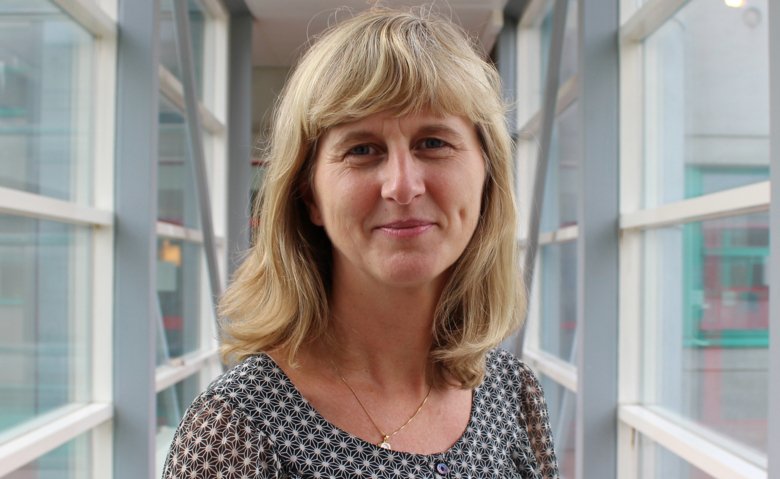
"Cancer and Alzheimer's disease are like the two sides of the same coin," says Maria Ankarcrona, Professor of Experimental Neurogeriatics at the Department of Neurobiology, Care Sciences and Society at Karolinska Institutet.
Cancer cells switch off the apoptosis program to survive, while the same program is wrongly activated in neurons affected by Alzheimer's disease.
"The mechanisms are very similar, but opposite. In the case of cancer, too few cells die, and cells in the brain die when they really should not," says Maria Ankarcrona.
The connection between the diseases also becomes clear in new studies, which show that Alzheimer patients have a lower risk of cancer and that cancer survivors do not develop Alzheimer's disease as often as others.
Even at the leading edge of research, clear links can be seen between the two diseases. At the same time as autophagy in cancer research is moving away from a possible treatment mechanism towards a safeguard mechanism for cancer cells, it has been observed that the autophagy process does not function as it should in Alzheimer patients.
"This indicates that the cleaning process in Alzheimer cells does not really function well, and waste products then accumulate that should not be there - which maybe activates the apoptosis program," says Maria Ankarcrona.
Much more difficult to research
Compared with cancer, Alzheimer's disease is much more difficult to research. It is difficult to take samples from living human brains and it is impossible to cultivate the affected cells in test tubes, since they cannot even survive in their natural environment. Cancer tumours are removed with surgery all the time, and cancer cells live and divide forever. (The most famous cell-line in the world, HeLa, is living and thriving in many laboratories and comes from the tumour that killed an American woman, Henrietta Lacks, in 1951.)
Alzheimer's researchers are often forced to make studies of brain tissue from patients who died 15-20 years after the first symptoms appeared. Naturally, they do not have the same opportunities to follow the progress of the disease.
The classic finding from the brains of people who have died of Alzheimer's disease is so-called plaque, consisting of amyloid beta, the peptide found outside neurons, and balls of the protein called tau inside the neurons.
A Japanese research group under the leadership of Per Nilsson, a researcher at Karolinska Institutet, recently published a study of mice that had been genetically deprived of the autophagy function in certain brain cells. Not only did the memory of the mice deteriorate sharply, but the researchers could also show that amyloid beta collected inside the brain cells in a similar manner to what is believed to occur at an early stage of Alzheimer's disease.
Maria Ankarcrona's research is concentrated on the role of mitochondria and she has shown that amyloid beta can enter mitochondria and that it is toxic.
"A surplus of amyloid beta could lead to the collapse of mitochondria and start the apoptosis program, but we do not know that yet," she says.
And even if this should prove to be the answer to how the disease starts, curative treatment is probably far away. A big problem with Alzheimer's disease is the time aspect. When the first symptoms of the disease appear, it has been ongoing for a long time. The brain has a very large reserve capacity, so a huge number of brain cells may die before it is diagnosed and those brain cells cannot be replaced. This means for preventive treatment to have any benefit, it must be started long before the symptoms appear. And a long-term preventive treatment that slows down the cell death functions in the body would probably increase the risk of cancer instead. Not a very attractive side-effect. So a curative treatment is not the first thing that Maria Ankarcrona is searching for.
HIV and cell death
"What we are trying to do is find molecules that can stabilize the functioning of mitochondria so that it is supported as long as possible, and in that way we can prevent neurons from dying. It may be a way of at least delaying the course of the disease," she says.
It is not only the body's imbalance in cell death mechanisms that can cause a disease. Another major research topic is how other disease agents can use these mechanisms to survive. A very important example is viral diseases, and in particular the human immunodeficiency virus, HIV. The virus is able to master cell death mechanisms far better than scientists can. This is why it is so difficult to defeat it.
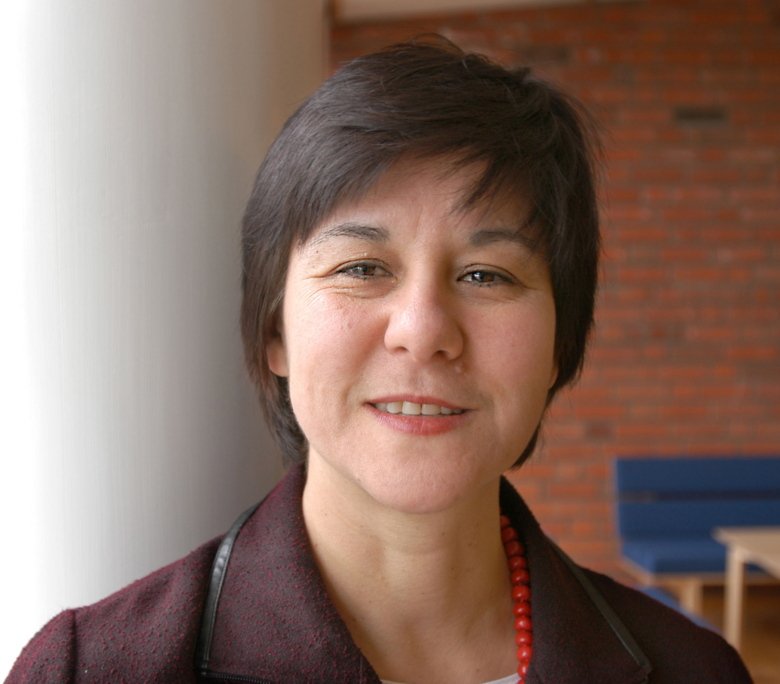
"HIV can activate the apoptosis program so that it causes significant cell death, but at the same time, some cells containing HIV become immortal," says Francesca Chiodi, Professor of host-parasite interaction at the Department of Microbiology, Tumour and Cell Biology at Karolinska Institutet.
It begins directly after a person has become infected with HIV. The virus immediately infects a key part of the human immune system, the T-helper cell, uses the cell's DNA machinery to replicate itself and then kills the cell by activating the apoptosis program. This causes the massive death of T-helper cells already in the first month, before the infected person even knows that he or she is infected. There are a large number of T-helper cells in the stomach to protect the body against foreign substances, but when they die on such a large scale a weak spot is created in the body's defence and different bacteria can enter the blood circulation. It could be described as a misleading manoeuvre by the virus. The bacteria are immediately attacked by the immune response which initiates a large process of inflammation, but the shortage of T-helper cells makes that immune system weak. The HIV utilises the situation and in the resulting chaos it is able to get past all the body's defence mechanisms.
The T-helper cells have a special receptor on their surface called CD4, and this is necessary for HIV to enter the cell. The virus can now attack many cells with the CD4 receptor and kill them, while the immune system becomes increasingly overloaded, which in turn leads to all immune cells being affected by the rapid deterioration of the environment.
"The immune activation becomes so weak and the immune cells become so stressed that they can no longer do their job and in the end they die," says Francesca Chiodi.
Without treatment, the infection eventually leads to what is called "Acquired ImmunoDeficiency Syndrome", or AIDS. In other words, the immune system completely collapses and the infected person dies, with no defence remaining against a more or less serious infection.
Live an almost normal life
The first anti-viral drugs that succeeded in stopping the onslaught of the virus were released in the middle of the 1990s. The drugs have developed since then and there are currently six different pharmaceutical classes of HIV drugs that all function in different ways. These are used in different combinations to stop HIV as effectively as possible. At one level it works very well. Patients given good treatment who respond well do not have any detectable amounts of viral particles in the blood or other bodily fluids. The treatment works so well that some would argue that these patients can, in principle, be considered as healthy. Unfortunately, this is not correct.
"The drugs give great benefits and the patients can live an almost normal life, but at the same time the effects of the early immune activation remain. The immune system never recovers completely, which can have a long-term effect on the patients' health," says Francesca Chiodi.
For this reason, HIV patients have a higher risk of cardiovascular disease, diabetes, cancer, liver diseases, osteoporosis and mild dementia compared with the normal population.
In order to protect the immune system and thus reduce the risk of later consequences, the treatment of HIV patients is started as soon as possible. It is still too early to say what impact it will have on the long-term effects.
But even patients given good treatment who have no detectable amount of virus in their blood still carry the virus, since even though the majority of virus particles that infect T-helper cells activate the apoptosis program and kill them, there are always some infected T-helper cells which become immortal instead when the apoptosis program is turned off. The HIV is integrated in the cell's DNA without replicating, and it becomes a silent infection. This means that the virus is invisible to the immune system and impossible to access via drugs, which all work by interfering with the virus's activity, but when there is no activity the drugs are ineffective.
The absolute leading edge of HIV research is about finding a way of gaining access to the hidden virus particles and knocking them out. If you can succeed with this, you have a curative treatment. An obvious way of doing this is to start up the apoptosis program again in the cells where HIV is hiding. The question everyone is asking is, how it should be done?
Just as with cancer and Alzheimer's disease, the key to the effective treatment of HIV appears to be understanding the cell death mechanisms which are either inactivated or unnecessarily activated, and then learning to change them in the desired direction. This is probably why cell death research has such high priority in the world at the moment. A breakthrough in this area would have a hugely positive outcome for humanity. Now that there is a new research article published every 24 minutes, there should be good prospects of this happening soon. Who knows, maybe a crucial finding has been published while you have been reading this article?
For researchers
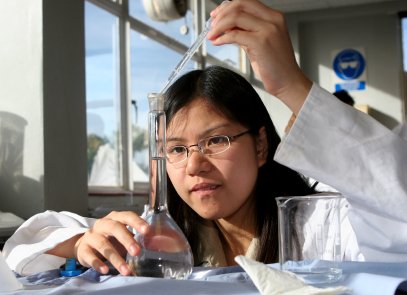 Photo: Istockphoto
Photo: IstockphotoCore facilities at KI
Karolinska Institutet offers a wide range of core facilities, providing service, recourses and competence to academic research in Sweden. These core facilities were all founded to meet the needs of the university’s own scientists, and they are under constant development to provide the latest techniques and knowledge within their fields of expertise. Karolinska Institutet is also a major partner in several national research infrastructures.
